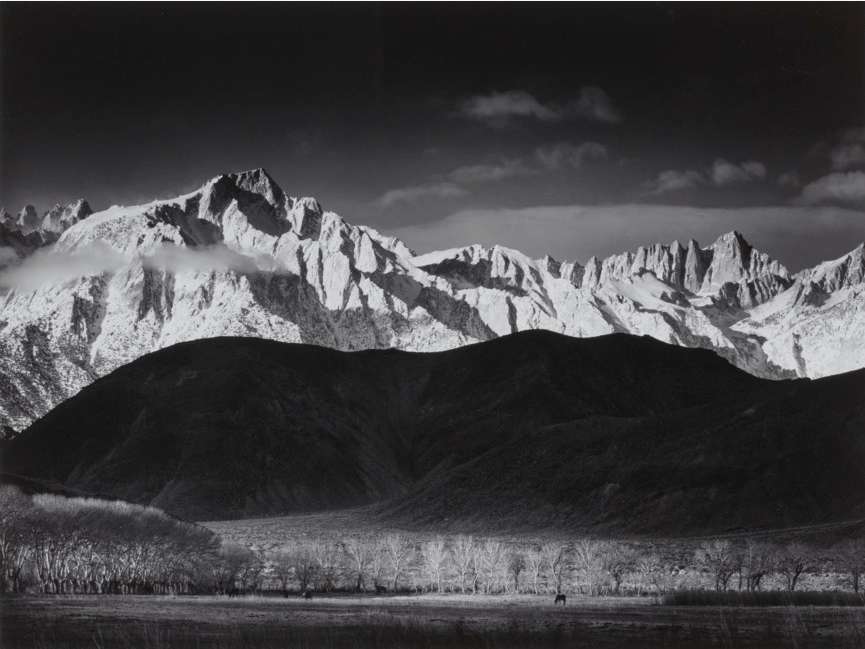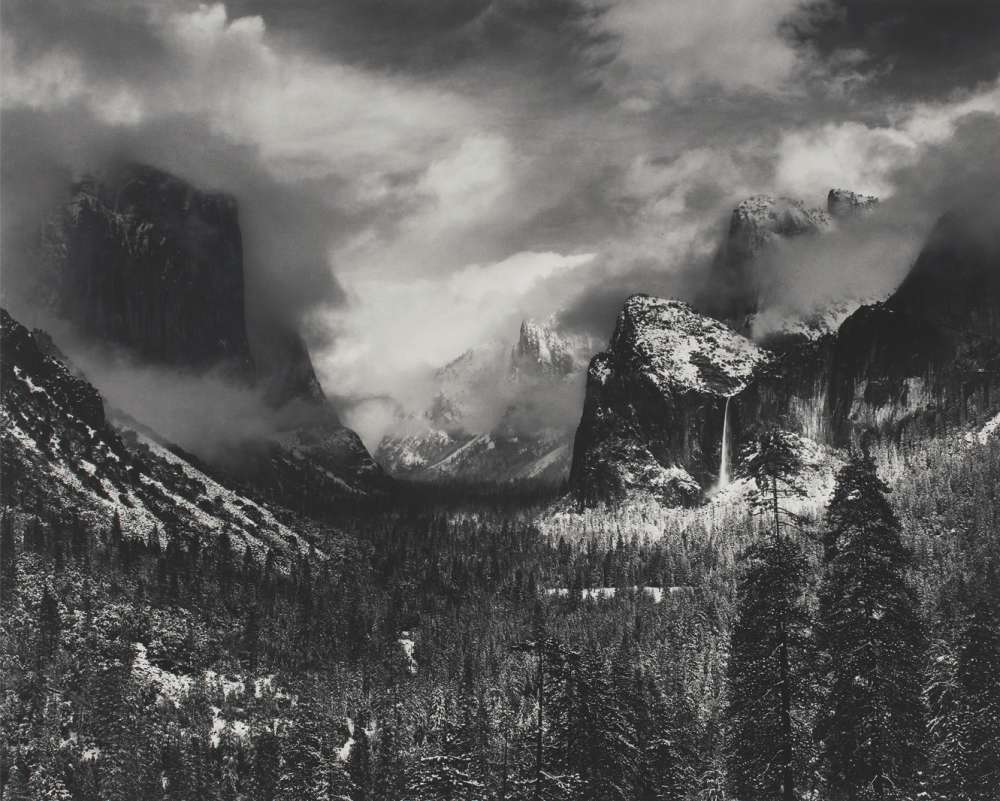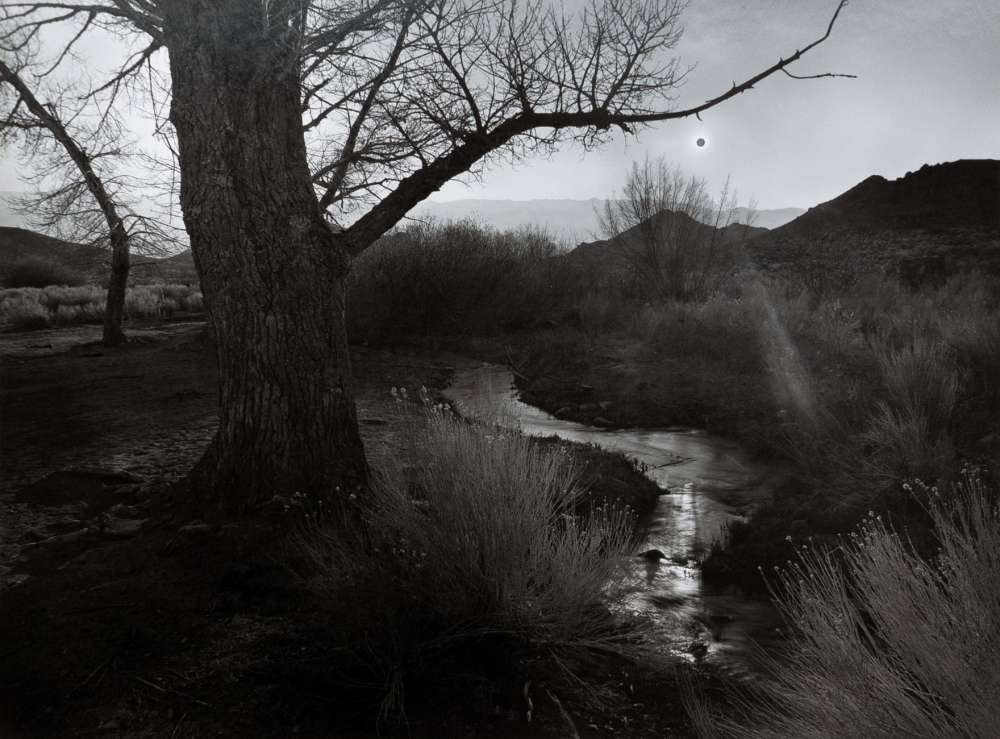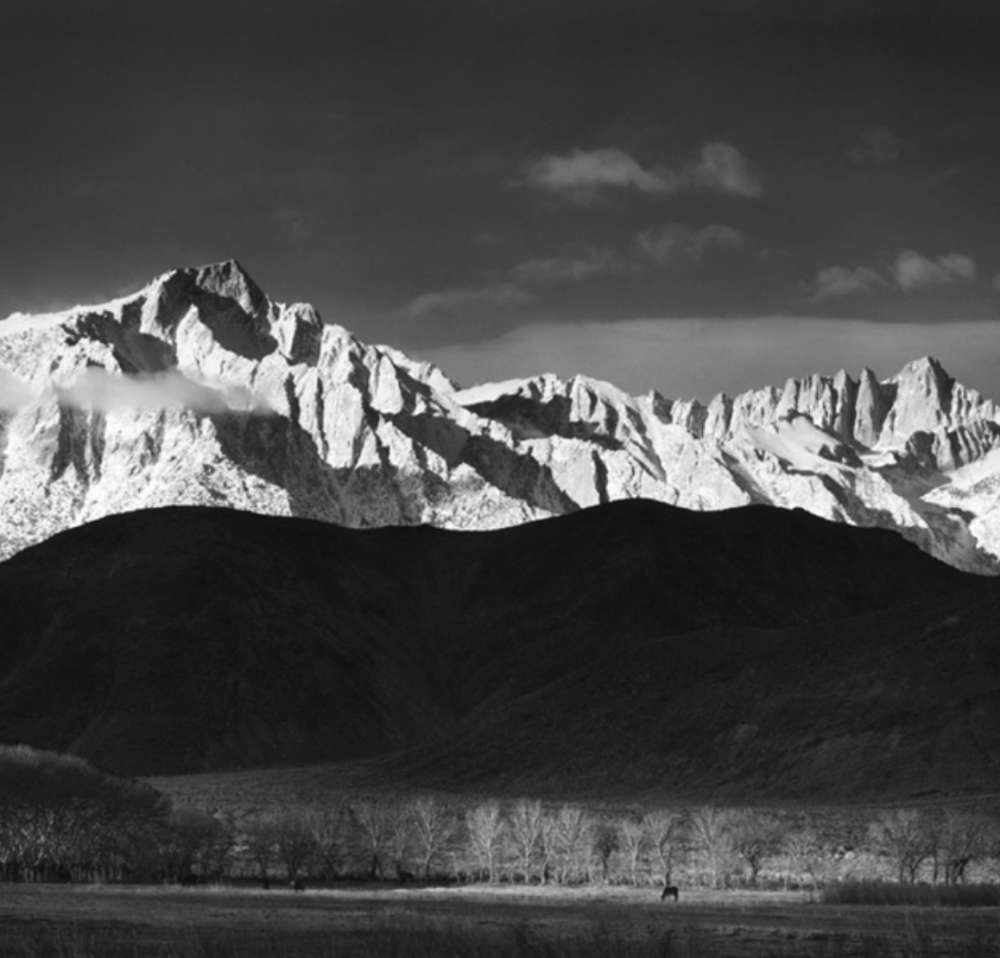Ansel Adams
Works
-
 Ansel Adams, Winter Sunrise, Sierra Nevada from Lone Pine, California, 1944
Ansel Adams, Winter Sunrise, Sierra Nevada from Lone Pine, California, 1944 -
 Ansel Adams, Cathedral Peak and Lake, Yosemite National Park, 1938
Ansel Adams, Cathedral Peak and Lake, Yosemite National Park, 1938 -
 Ansel Adams, Clearing Winter Storm, Yosemite National Park, California, 1944
Ansel Adams, Clearing Winter Storm, Yosemite National Park, California, 1944
Biography
Ansel Adams Biography
Known for capturing essential landscapes along the American west, Ansel Adams established himself as one of the most influential and prolific 20th century photographers. Distinct from his contemporaries, Adams was not preoccupied with capturing shots that perfectly emulate reality; instead, he harnessed his knowledge of photographic theory and employed techniques that highlight the intricate and effervescent character of some of Earth’s greatest sites. His work evokes the same heightened sense of serenity that one feels when experiencing an element of nature for the first time.
Adams was born in San Francisco in 1902. Faced with dyslexia early on, Adams struggled to complete academic tasks and as a result received a limited formal education, completing the equivalent of eighth grade. Of course, little time elapsed before his brilliance broke through in other scapes of life. As a young boy, he developed a passion for artistic endeavors: Adams taught himself to read music and play the piano at twelve years old.
In 1919, Adams joined the Sierra Club––an organization dedicated to environmental preservation––where he was later chosen to be the official event photographer. Along with Edward Weston and Imogen Cunningham, Adams was a founding member of f/64, a coalition of 20th century San Francisco photographers with similar styles. Adams also crafted ten volumes of a manual detailing photographic technique. To this day, these books remain the most influential guides to the medium.
The John P. Schaefer Center for Creative Photography at the University of Arizona, Tuscon houses a wide-ranging archive of Adams’s essays, proof prints, and negatives. Today, Adams’s works are held in collections located most notably at The Museum of Modern Art in New York, the National Gallery of Art in Washington, D.C., the Los Angeles County Museum of Art, and the Victoria and Albert Museum in London.









